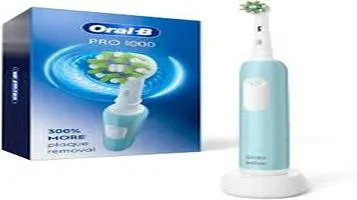A Comprehensive Review of Measuring Cups and Spoons: Essential Tools in Every Kitchen
Measuring cups and spoons are essential kitchen tools designed to provide precise measurements for cooking and baking. Typically made from materials like plastic, stainless steel, or glass, they come in standardized sets, each marked with various measurement units. Measuring cups usually include sizes such as 1 cup, 1/2 cup, 1/3 cup, and 1/4 cup, while spoons generally range from 1 tablespoon to 1/4 teaspoon. These tools ensure accuracy when following recipes, helping to achieve consistent results in culinary creations. Their ergonomic design often features easy-to-read markings and comfortable handles for ease of use. Whether you're a professional chef or a home cook, measuring cups and spoons are indispensable for ensuring each dish is perfectly balanced and flavorful.

When it comes to culinary endeavors, precise measurements are often the difference between a successful dish and a kitchen disaster. Whether you're a seasoned chef or a home cook, the importance of accurate measurements cannot be overstated. Measuring cups and spoons are the unsung heroes of the kitchen, ensuring that recipes are followed correctly and consistently. This review will delve into the various aspects of measuring cups and spoons, highlighting their importance, types, material considerations, and overall functionality.
The Importance of Measuring Cups and Spoons
Cooking and baking are both science and art. While creativity and intuition play significant roles, the science of cooking relies heavily on precise measurements. Too much or too little of an ingredient can alter the flavor, texture, and appearance of a dish. Measuring cups and spoons provide the accuracy needed to achieve the desired results, making them indispensable tools in any kitchen.
Types of Measuring Cups and Spoons
There are primarily two types of measuring cups: dry and liquid. Each is designed to measure specific ingredients accurately.
- Dry Measuring Cups: These cups are typically made of plastic, metal, or ceramic and come in nested sets, ranging from 1/4 cup to 1 cup. They are designed to measure dry ingredients like flour, sugar, and grains. Dry measuring cups have a flat rim, making it easy to level off ingredients for an accurate measure.
- Liquid Measuring Cups: These cups are usually made of glass or clear plastic and come with a spout for easy pouring. They are marked with measurements on the side and are available in various sizes, such as 1 cup, 2 cups, and 4 cups. Liquid measuring cups are ideal for measuring ingredients like water, milk, and oil.
Measuring spoons, on the other hand, are versatile tools used for both dry and liquid ingredients. They typically come in sets that include 1/4 teaspoon, 1/2 teaspoon, 1 teaspoon, and 1 tablespoon. Some sets may also include additional sizes like 1/8 teaspoon and 1/2 tablespoon. Measuring spoons are essential for accurately measuring small quantities of ingredients, such as spices, baking powder, and extracts.
Material Considerations
The material of measuring cups and spoons plays a crucial role in their durability, ease of use, and maintenance.
- Plastic: Plastic measuring cups and spoons are lightweight, affordable, and available in various colors. They are less likely to break if dropped, making them a good choice for families with children. However, plastic can absorb odors and stains, and may warp if exposed to high heat.
- Metal: Stainless steel measuring cups and spoons are durable, resistant to rust and corrosion, and easy to clean. They do not absorb odors or stains and provide a sense of durability and reliability. Metal sets are generally more expensive than plastic but are a worthwhile investment for serious cooks.
- Glass: Glass liquid measuring cups are heat-resistant and can be used in the microwave. They are usually transparent, making it easy to see the measurement markings. However, glass can break if dropped, so they require careful handling.
Functionality and Design
The design of measuring cups and spoons can significantly impact their functionality. Here are some features to consider:
- Clear Markings: Measurement markings should be easy to read and durable enough to withstand regular use and washing. Etched or engraved markings are preferable to printed ones, which can fade over time.
- Ergonomic Handles: Measuring cups and spoons with comfortable, ergonomic handles are easier to use, especially when measuring large quantities or thick ingredients.
- Stackability and Storage: Nested sets that stack together save space and make storage more convenient. Magnetic measuring spoons that stick together are also a great option for keeping them organized.
- Flat Bottoms: Measuring cups with flat bottoms provide stability, preventing spills and ensuring accurate measurements.
- Pouring Spouts: Liquid measuring cups with well-designed spouts make pouring easier and more precise, reducing the risk of spills.
Conclusion
Measuring cups and spoons are fundamental tools that every kitchen should have. They ensure accuracy and consistency in cooking and baking, helping to achieve the perfect dish every time. When choosing a set, consider the material, design, and specific needs of your kitchen. Investing in high-quality measuring cups and spoons can enhance your culinary experience and lead to better results in the kitchen. Whether you're a novice cook or an experienced chef, these tools are essential for precision, efficiency, and success in all your culinary creations.






